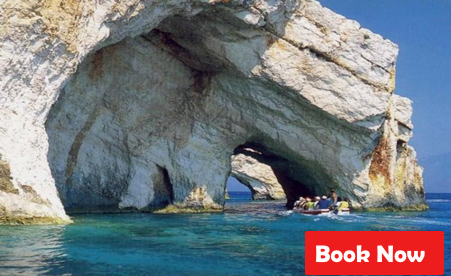
Milos was the destination of the first known travel in the world in the open sea. Bold navigators 8000 years BC covered a distance of almost 100 NM and they reached Milos , where they discovered and took with them, a hard volcanic rock, called opsidianos.
The rich in minerals volcanic ground and the occupation with the excavation, the treatment and also the sale of these minerals, constituted the first source of wealth for the island and the residents until today.
Many small and big sandy beaches with many colours, marine caves and geomorphological forms of volcanic inspiration are responsible for the explosion of tourism in Milos . The history, the legends and the tradition are met with the extraordinary beauty of the island and they compose an ideal destination of relaxation and pleasure, able to satisfy even the most difficult taste. Leave your dreams free to emerge in the embrace of Venus and become one with the sun and the blue waters of the Aegean.

Mythology
Many ancient writers refer to the island giving it special names such as Vivlis, Gorgris, Mimallis, Akitos, and Zefiria. Terminologically it has been expressed that the name Milos originates from the pre-Hellenic word "vilos", which later evolved to the word "milos" which mean sheep.
According to an Ancient legend the first resident of the island was named Milos . It is said that a young man with this name left from Delos and went to Cyprus . There he met the family of King Kinira and in the beginning became best friends with Adonis the son of the king and later relatives when he married his daughter Pelia.
The connection of the two men, the friendship and their communication was not broken even by the death of Adonis. When Milos heard about the death of his friend , hanged himself from a tree that took the name Milia. Aphrodite the goddess of love, touched by this fact and the sudden death of the two young men, transformed Milos into an apple (in Greek milo means apple) and his wife who also committed a suicide into a pigeon. At the same time their son who was also named Milos, went to the Aegean and he resided at Milos.
The first residents of the island are considered to be the Cares and the Phoenicians.

HISTORY
The first excavations became in the island from English archaeologists in 1896 and they discovered ruins of prehistoric season that cover more than 1500 years. The effects of Minoan civilization is obvious. Around the 1400 BC we have the appearance of the Mycenaean civilization. In 1100 BC the decent of the Dorians took place and the area of klima was inhabited. The town had walls, traces of which survive until today. Arts such as those of ceramics and sculpturing know great prosperity.
During the Persian wars, the people of Milos fought on the side of the Athenians, while during the Peloponnesian war they attempted to stay neutral. During the following years and under the rule of the Macedonians, Milos came to a period of prosperity when economy, commerce and basically the arts flourished. During this period many well-known sculptures were created and between them the famous Aphrodite of Milos.
Near the village of Tripiti , in one abrupt side, at a height of 150 meters from the sea we find the catacombs. The catacombs were graves for the dead. Their total length reaches the 184 metres, but only a part of them is today open for the visitors.
With the separation of the Roman Empire in western and Eastern, Milos goes over to the Byzantine state, while afterwards the siege of Constantinople by the Franks, in 1204, the island goes over to the Venetians. People of Milos never accepted their fate and they fought against their conquerors. Varvarosa, the great pirate showed up and asked the submission of the island to the Turks and the emerge of heavy taxes. Milos was one of the first islands of the Cyclades to respond for the revolution during 1821 against the Turks.

Beaches
Milos is an island full of bays and amazing sandy beaches with crystal clear waters, ready to welcome visitors and help them relax under the bright sun and the blue sky of the Cyclades.
Here you can find out about the known beaches of the island. There are more than 70 beaches waiting for you to discover!!

Ancient Theatre
You will find the Ancient Theatre nearby Tripiti.
Τhe construction of the theatre probably dates back to the Hellenistic period, but the remains visible today belong to the Roman phase of the monument. Preserved are the concave with seven marble rows of seats, the orchestra, the floor of the stage building, and many elaborate architectural parts.
The clearing of the monument began in 1838 by French specialists. Excavations began in 1989 and revealed the earlier orchestra, the floor of the stage building and many architectural parts.The latter are currently being drawn and studied, so that the monument can be consolidated and restored.
Despite the fact that research is not completed, the theatre is used for several performances.

Archaeological Museum
Τhe Museum of Milos is housed in a neo-classical building of 1870 in Plaka , work of E. Ziller. It was restored by architects of the 21st Ephorate of Prehistoric and Classical Antiquities, and functions as a museum since 1985.
The museum includes the following collections:
Prehistoric finds from Pylakopi
Sculptures and reliefs
Obsidian tools and other pieces
Inscriptions













